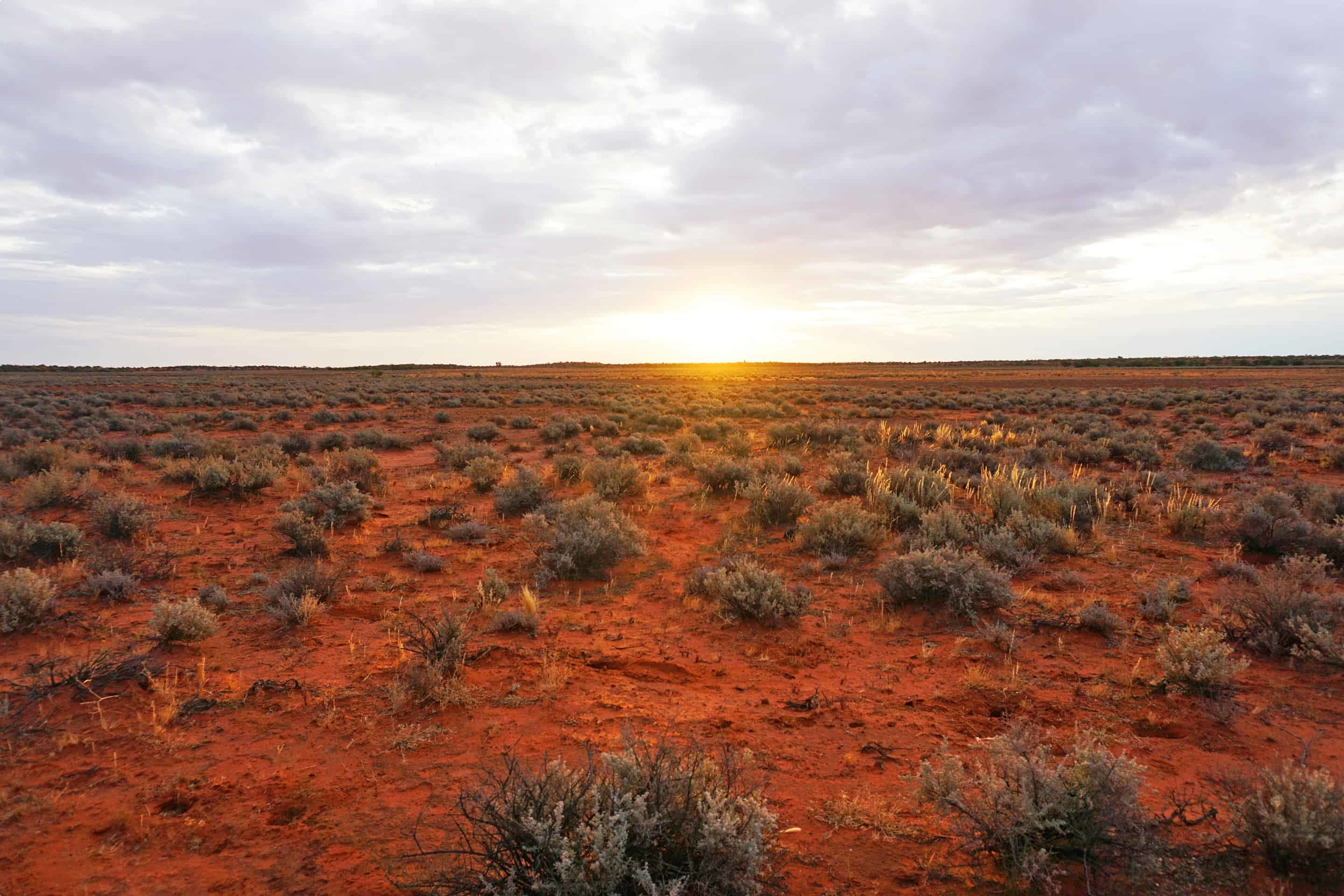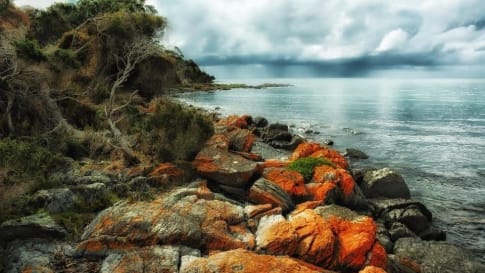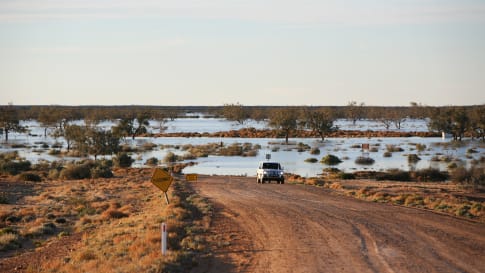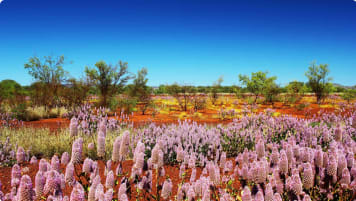Why did the British settle Australia?
Escorted small group tours for mature and senior travellers that promote aboriginal and colonial history discussion on tour. For couples and solo travellers interested in learning about Aboriginal history and the colonial explorers across the states.
5 Dec 20 · 11 mins read

Reasons for the British Settlement of Sydney
By Marco Stojanovik
On 7 February 1788, Governor Arthur Phillip formally proclaimed the first of the Australian colonies, New South Wales, at Sydney. Twelve days earlier Governor Phillip had landed Britain’s first fleet at Port Jackson, establishing a settlement at Sydney Cove. He had been directed by the British government to do so at Botany Bay, which had been discovered by Captain James Cook in 1770. But, finding the bay too exposed for safe anchorage and the surrounding country unsuitable for settlement, he had ventured farther north to discover Port Jackson only a few miles away.
It is likely that the Europeans knew of the Australian continent in some form for over 200 years before the British finally decided to settle it. But, with no evidence of any commercial value to be gained from the land, the European powers had largely shunned it. So, what had changed to spark the British interest in the late eighteenth century?
The usual explanation is that with the American colonies revolting in 1776, Britain had been deprived of its outlet for the criminals that were overfilling its goals, and so Australia was chosen as the new location for its overseas prison. However, this explanation may be overly simplistic. Instead, one must look at the pressures on Britain to maintain its commercial empire and militaristic strength to fully understand decisions for settlement.
This article is adapted from the first two chapters of Geoffrey Blainey’s The Tyranny of Distance: How Distance Shaped Australian History. It explores the reasons for Australia’s settlement beyond the need for a penal colony.
Australia Shunned by the Europeans
Although it is likely that Europeans knew of Australia since the 16th century, they opted to largely avoid it until as late as the eighteenth century. Since 1516 Portugal had held a colony in Timor, only 300 miles from Australia, and must have occasionally been driven within sight of its coast by annual north-western monsoon winds. And with Australia’s west coast flanked by one of the world’s richest trade routes, between Europe and the East Indies, it had been visited at countless points by Dutch ships, before Abel Tasman and Dutchmen traced nearly two-thirds of Australia’s coastline in the mid-17th century.
However, the Europeans were only concerned with trade in the region, especially confined to luxurious goods to be worth the risk and expense of the long sea voyage – and Australia had shown no sign that it provided any opportunities for such. The Indigenous people were not ocean seafarers, nor were they traders or collectors of precious stones, and therefore could not show visiting seamen any commodity of value. The land seemed to grow nothing that was valuable in European markets, yield no precious metals or minerals, nor be inhabited by any animal or fish worth the long voyages.

James Cook Discovers the Eastern Coast of Australia
It was a new Europe which the navigator James Cook left in August 1768 on the voyage which would discover the east coast of Australia. England had risen to be a dominant power, international commerce had rapidly increased, and the industrial revolution had begun. As such, with a rising interest in new lands and new sources of trade and commercial gain, England instructed Cook to search the South Pacific for the mysterious south land.
Landing in Botany Bay in April 1770, Cook saw freshwater creeks, swift enough to turn the large waterwheel of a flour mill, and vistas of course grass, which he believed could be used for hay. However, he had found no real commodity that could enrich England. Sure, there were bays at which small colonies of Europeans could probably support themselves in reasonable comfort by farming and fishing – but the vast unpeopled areas of North America had all those advantages, as well as exportable commodities and the incalculable asset of proximity to Europe.
The Atlantic coast of North America was more suitable for settlement – close enough to Europe to ship across their timber and fur, and to import manufactured goods at prices which the cost of shipment did not make prohibitive. Similarly, European migrants were willing to make the sea journey across the North Atlantic because the voyage was not unduly dangerous or long, nor was it seriously menaced by scurvy or fever.
Australia’s distance from Europe, on the other hand, made it a less attractive option for a settlement colony. Nor was it close enough to trading routes to be an outpost base colony that could serve the needs of Europe’s trading colonies. Plus, neither did it boast the soil or climate to produce the natural commodities which Europe demanded. At the end of Cook’s second voyage in 1775 it was therefore apparent that it was not fit to serve as any type of colony. Australia had once again been shunned.
The Need for an Overseas Prison
It is widely argued that it was the events on the western side of the Atlantic that would alter the English perception of the need for an Australian colony. In 1795, as Cook sailed home up the English Channel, George Washington was leading the colonist’s army in the siege of the English held city of Boston. The colonists’ ultimate victory and the creation of the United States of America would have a huge impact.
The usual explanation for sailing the first fleet to Botany Bay is that by 1776, the American revolt had deprived Britain of the outlet for its criminals. Soon, English goals and prison hulks began to bulge with criminals and so Britain finally decided to exile to the eastern coast of Australia these convicts whom it would have once shipped to North America.
Geoffrey Blainey, however, argues it is puzzling Britain would have chosen Australia for her overseas prison. Being so far away, the cost of sending convicts to Australia was much larger than sending them to an isolated British possession in the northern hemisphere. Also, the long voyages meant it was a very slow solution to what is often said to have been an urgent problem.
Some historians say there was no alternative to an overseas prison. They could have been sold to the sugar plantations of the West Indies but the planters already had a sure supply of slaves who worked well in a tropical climate; and there was the fear that British convicts could undermine discipline and incite slaves to revolt. Any suggestions of sending ship convicts to plantation islands in the West Indies would probably also be resented by the powerful slave-trading interests in England.
Meanwhile West Africa already had plenty of cheap labour and therefore English convicts would not serve England. And, although the unoccupied coast known as Das Voltas Bay between the Portuguese colony of Angola and the Dutch colony of Cape Good Hope had been considered, it turned out to be too dry, sandy, and barren upon further inspection.
Yet still, there were prompter and cheaper solutions to sending convicts to Australia. They could have made guarded prison settlements in say the remote corner of Nova Scotia or Jamaica, or in one of the uninhabited islands of Bermuda or the West Indies. The English could have even built more goals at home. Why then was Australia chosen for settlement?
Botany Bay as a Sea Base and Refitting Port
The historian K. M. Dallas has suggested that England needed a new sea base and refitting port in order to strengthen her commercial empire in the East. Botany Bay, he argues, was to be that maritime supply base and port of call for ships in four promising trades.
One trade was the China tea trade, a vital source of British commerce and comfort. Lowered import duties on tea in 1784 had resulted in soaring tea trade to England, amounting to three quarters of the tea carried away from China. With the traditional route – the narrow straits near Sumatra – menaced by pirates and potentially Dutch ships in times of war, an alternative route between Europe and China was needed. One that went around the Cape of Good Hope, around Tasmania, up the East Coast of Australia, and then through the islands of the east of New Guinea onwards north-west to China was preferred. That was a safe alternative assuming that England first established a half-way house at Botany Bay.
Around the same route and into halfway ports in Australia could come English ships bound for the Pacific coast of north-west America where commerce in sea otter skins was booming in the 1780s. And Botany Bay could also become a base for whaling ships that had begun venturing into the Indian and South Pacific oceans. Finally, it could be a base from which British ships quietly emerged to dabble in smuggling and privateering in the rich Spanish trade that linked the Philippines, Mexico and South America.
Blainey adds a fifth potential prize: having founded the port of Penang in the Malay Peninsular in 1786, and eager to break further into the Dutch monopoly of trade in the East Indies, Botany Bay could offer base for excursion to the opposite end of the Dutch trading realm.
In all, English ships could if necessary call at Botany Bay for fresh water and food and fuel and supplies in an age where scurvy was still a major issue and the duration of every sea voyage was unpredictable. Ships could call for repairs and supplies, unload their catch for transshipment to England, and in time of war shelter in Botany Bay.
The late eighteenth century was also a time when the sea-lanes were a high road to wealth. Interest in harbours, especially as half-way houses on potential trade routes, reflected a faith that a glittering oceanic realm of commerce was about to open up. Strategically, England had to ensure that potential sea bases of importance did not fall to its rivals.
In the 1870s, the country jostled with France for strategic sites and spheres of influence. It had the richest prize, India, but did not even command the sea route to it. As the French created a base in the south-east of Madagascar and signed a treaty with the king of Cochinchina, the British chose to occupy Botany Bay. This was done both for the potential long-term prospects, as well as the short-term priorities that France should not be allowed to also occupy such a strategic site.
Norfolk Islands’ Enticing Articles of Commerce

Another reason to send convicts to Australia was the several enticing articles of commerce that had been discovered on Cook’s second voyage in 1774. One was the flax plant that grew luxuriantly, judged by British manufacturers to be superior to Baltic flax for the making of canvas and sailcloth and superior to Baltic hemp for the making of ships’ cables.
At the same time tall trees which grew on the water’s edge on islands near Australia could yield masts and spars of unparalleled size and quality for the British fleets in India. Britain’s military strength and an increasing part of her commerce relied on sea power, and a continuous supply of flax and ships’ timber were vital to this.
But in the 1780s England was dependent upon imported flax, spending about £500,000 on it annually, mostly from St Petersburg in Russia. Any blockade of the Baltic was thus a blockade against English sea power and England’s navy could not be entirely secure if it still relied on naval stores from the Baltic.
One such blockade by the neutral northern European powers in 1780 endangered England’s ability to carry out war against France and the rebelling American colonies. As England’s lifeline of flax and hemp was frayed, stockpiles dwindled, and home-grown cultivation was encouraged – alas ultimately it was inferior to that from Russia.
The concern for flax did not cease when peace came in 1783. Needing a more secure source, attention eagerly turned to the promising flax that grew on Norfolk Island, 1000 metres east of Botany bay, reaching heights of eight feet (5 feet more than the tallest in northern Europe) and with fibre three times as long as the flax from the Baltics.
Norfolk pines meanwhile were sighted as a potential valuable source of timber for ships’ main masts and spars. Having lost their main supply from the pine forests of Maine and New Hampshire when the American colonies rebelled, England lacked a substitute supply of spare masts needed for necessary frequent replacements. Although Australia was too far away to supply England with a cheap timber for ship building, the Norfolk Island pine trunks could be shipped cheaply and rapidly to any port in the East India Company’s domain for English merchant ships and naval fleet that had lost masts or spas in storm or battle.
Australia’s mainland was thus settled because of its proximity to Norfolk Island, the island itself too small to be expected to produce enough grain and meat to feed a large population, its anchorage too cramped to produce a large supply of flax, and its coast too rocky and lacking a safe harbour. If flax plants could be transported to Botany Bay, the similar climate, limitless land, and forced labour might aid its cultivation on any scale that seemed necessary.
Flax & Timber a False Hope
England’s hope for Norfolk flax and timber soon faltered though. Survival on the mainland quickly became the main priority of the convict colonies struggling with infertile soil and extreme summer heat. When Cook and his crew had reported on the land in 1970, they had happened to visit at what is normally the wettest time of the year and were seeing dry land at its kindest. However, he had mistakenly concluded the opposite, that they had seen the land at its drabbest and driest and conditions for farming would only get better. The real conditions means that the original plan for surplus men and women to grow flax there could not be followed as every cleared acre now had to grow grain.
But even so, the flax industry would never have prospered. In reality, the length of the fibre did not produce the superior sailcloth which had been expected, but rather a weak canvas at high cost. Moreover, the threat to supply lines across the Baltic Sea did not erupt, and even after France and England went to war in 1793 the Baltic remained an open sea. Russia continued to load its bundles of flax and hemp into a procession of English ships.
Timber fellers, meanwhile, found that many of the Norfolk pines were outwardly sound but rotten behind the bark and thus too risky for the spars of large ships. Much of the forest was instead split into firewood.
If England had been much closer to eastern Australia, detailed investigation would probably have preceded the decision to colonise; but distance prohibited such knowledge. The English had been drawn to Australia, settlement was underway, and there was no turning back now.
Tour From Sydney
Odyssey Traveller is now offering a new tour departing from Sydney, the site of Australia’s first settlement. In our tour to the Southern Highlands of NSW, we seek to go beyond the beautiful beaches and major tourist attractions often listed as places to visit in NSW, such the Hunter Valley, Coffs harbour, Darling harbour, Byron bay or Bondi. This is a small group tour that will take you out of Sydney and away from the beach culture to see the Blue Mountains and the hidden gem landscapes in between as a day trip collection to some important cultural and natural attractions in the beautiful Southern highlands of regional New South Wales including historic Berrima, Kangaroo Valley, Bowral and the Blue Mountains.
Odyssey Traveller has been serving global travellers since 1983 with educational tours of the history, culture, and architecture of our destinations designed for mature and senior travellers. We specialise in offering small group tours partnering with a local tour guide at each destination to provide a relaxed and comfortable pace and atmosphere that sets us apart from larger tour groups. Tours consist of small groups of between 6 and 12 people and are cost inclusive of all entrances, tipping and majority of meals. For more information, click here, and head to this page to make a booking.

Articles about New South Wales published by Odyssey Traveller:
For all the articles Odyssey Traveller has published for mature aged and senior travellers, click through on this link.
External articles to assist you on your visit to New South Wales
Related Tours

days
Jun, Jul, Sep, Feb, Mar +1Darwin and Kakadu small group tour
Visiting Northern Territory
Explore and learn as part of a small group tour for seniors on this package tour to Darwin and Kakadu National park, a UNESCO world heritage site. This program also visits Arnhem land. Our focus is on ecology, landscapes and history on this 14 day program in the far north of the Northern Territory.

19 days
Mar, Nov, FebDiscovering Tasmania’s Wildlife
Visiting Tasmania
Small group tour of up to 15 mature and seniors travellers visiting and learning about Tasmania's wildlife and history. Visit Maria Island, Freycinet peninsula, Cradle Mountain, Strahan, Lake St Clair and Bruny Island over 16 days.
From A$11,450 AUD
View Tour
days
Nov, Mar, May, Jul, Sep +2Escorted small group tour North East New South Wales
Visiting New South Wales
Small group tour exploring the the North East region of New South Wales for mature and senior travellers. Travel, learn and explore about New England's history, the coast, National parks and regional towns in a time capsule surrounding Mudgee.

14 days
Mar, May, Jun, Jul, Aug +3Escorted small group tour of Western New South Wales
Visiting New South Wales
Discover the the Brewarrina fish traps, Aboriginal art at Mt Grenfell and visit the opal fields of White Cliffs. This small group also visits the World Heritage Site of Mungo man and lady stopping in Mungo National Park and other significant locations such as Broken Hill.
From A$9,250 AUD
View Tour
15 days
Sep, Dec, Jan, Feb, Mar +2Eyre & Yorke Peninsulas, and the Gawler Ranges
Visiting South Australia
Small group tour South Australia. Yorke, Eyre, and Gawler Ranges, discover the local history.
From A$10,350 AUD
View Tour
days
Mar, Apr, Jun, Jul, Sep +1Guided small group Motorcycle tours of Western New South Wales
Visiting New South Wales
Motorcycle tours of Western New South Wales. Discover the the Brewarrina fish traps, Aboriginal art at Mt Garrett, learn about the opals of White Cliffs. This small group also visits the World Heritage Site of Mungo man and lady stopping in Mungo National Park and other significant locations such as Broken Hill.

65 days
MarLong tour of Australia for a small group
Visiting New South Wales, Northern Territory
Small group tour for senior couples and solo travellers touring Australia. Travelling through the outback and visiting many of the famous sights as well as off the beaten track locations. Learn about the history of the people who explored the deserts, from indigenous communities to Europeans, as well as Burke and Wills, visit White Cliffs, Marree and far north Kakadu and the Kimberley.
From A$48,995 AUD
View Tour
days
Mar, May, Aug, Oct, Jan +1Small group tour of Victoria for Senior travellers
Visiting Victoria
This 16 day escorted small group tour of Victoria for the senior or mature traveller who enjoys learning whether as a couple or solo traveller explores an area of central Victoria that is rich in historic houses, gorgeous gardens and some amazing art.
Articles

Albany and ANZAC, Western Australia
Albany is the southernmost town of Western Australia. The Wildflower small group tour visits this historic town with a strong ANZAC connection. Albany before the Swan River colony, later to be known as Perth.

Landscape of Southern Australia from Mallee and Mulga.
Escorted small group tours for mature and senior travellers in Western Australia, Victoria, South Australia & NSW drive through former Mallee country. Article explains the iconic beginnings of Mallee and Mulga in the arid landscapes.
Questions about Australia for senior travellers
Questions About Australia for senior travellers Odyssey Traveller specialises in crafting unforgettable experiences for senior and mature-aged travellers interested in learning as a couple or as a solo traveller when they travel. Providing adventure and…

Short history of Adelaide, Australia
The capital of South Australia, Adelaide has a fascinating and distinctive history as the only Australian state without a convict past. On both of these small group tours; Adelaide or the Flinders ranges we explore and learn about this city.

The Arrival of Aboriginal Australians on the Continent
Tracing Aboriginal history via an outback small group tour for mature and senior couples or solo travellers provides an intriguing learning platform about Australia, rock art, trading and culture that traces a history possibly some 120,000 years ago.

The Australian Outback: A Definitive Guide
Explore learn and consider what is the outback in this article. For mature and senior travelers considering joining a small group package tours into the outback to see, learn and explore about this unique place, not only the landscape but the Aboriginal approach to living. On each of the tours for couples and the single traveler you learn something different but fascinating, from Outback Queensland, the Flinders, Broken Hill and the Kimberley and the wildflowers all contribute to this question, what is the outback?

The Burke and Wills Expedition, 1860-61
Learn on a small group tour of central Australia for active mature or senior travellers from Broken hill about Burke and Wills ambitious expedition. Suitable for mature aged couples or solo travellers.




